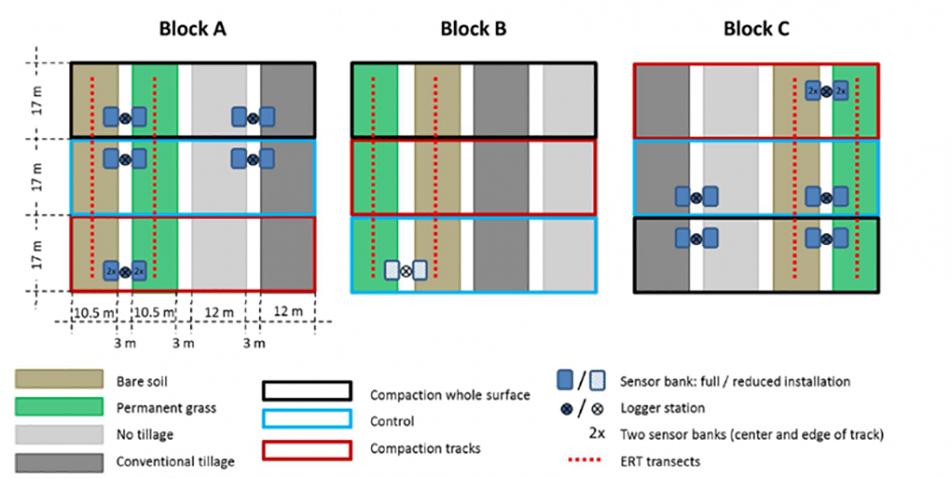Soil Structural Observatory
The goal of this study is to determine the different influences that soil compaction has on soil physical properties such as hydraulic conductivity, gas and neutrient diffusion, and water retention. In doing so, we hope to determine insight detailing the influence of biotic and a-biotic mechanisms that help to restore damaged soil structure. For this, we have assembled a large field experiment which we call the Soil Structure Observatory (SSO).

Figure 1: The layout of the SSO
The SSO consists of three field blocks (each block 54m x 51 m) partitioned into three rows and four columns. (Fig 1)
Each Row corresponds to a particular mode of vehicular-induced soil compaction. These are categorized as No Compaction (NC), Full Compaction (FC), and Track Compaction (TC). The fully compacted rows were subject to uniform vehicular compaction across the entire area. The track compacted rows consist of partitioned strips where the vehicle passed over, thus allowing for intermediate non-compacted zones.
Each column is designated a distinct management treatment, which is described as either Permanenet Grass (PG), Bare Soil (BS), Rotation Tillage (RT), and Rotation No-Till (RN). Permanent grass treatments are left to evolve naturally. Bare soil is treated to kill the vegitation as to exclude their influence on soil structure. Rotation tillage is treated in a conventional tillaging manner. Rotation no-till is managed by direct drilling, but now conventional tillage.
Location:
Zürich, Switzerland (47.4 °N, 8.5 °E):
Altitude: 444 m.a.s.l.
Mean annual precipitation: 1054 mm
Mean annual temperature: 9.4 °C
Soil:
Loam: 20-25% clay, 40% silt
Pseudogleyed Cambisol
One of the most typical arable soils in Switzerland
Initial compaction:
end of March 2014
Specific details:
Continous measurements taken at the SSO
People associated with the SSO
